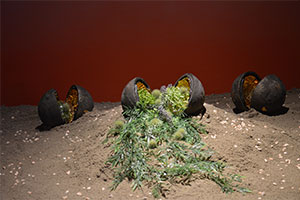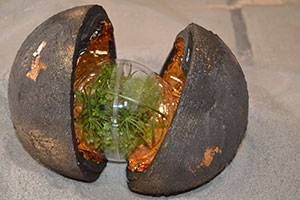EarthSeeds - Humanity's Ultimate Purpose in the Evolution of Life
The Origin of Life on Earth
Besides various religious explanations for the origin of life on Earth there are two prevailing scientific theories.
The most popular scientific theory is Neo-Darwinism that incorporates the genetic work of Gregor Mendel into the seminal concepts of Charles Darwin. Neo-Darwinists assume that, under favorable conditions, life can evolve from non-living material. Evolution is driven by chance, and chance mutations slightly affect the DNA. Bigger changes are the result of recombination, a genetic process in which DNA strands are swapped, transferred, or doubled. The mechanisms behind evolution are mutation and recombination, which create new meaning in DNA through adaptation and the process of natural selection.
The competing theory is called "panspermia". The Greek philosopher Anaxagoras who is believed to have been the teacher of Socrates first scientifically articulated this theoretical concept. It assumes that life is distributed throughout the universe in the form of germs or spores and that the arrival of such microbes contributed to the origin of life on Earth. These microbiotic elements arrived either via impacting comets or were perhaps even planted here by extraterrestrial alien civilizations.
A more recent version of this theory is called "Cosmic Ancestry" which holds that life on Earth was seeded by bacterial microbes from space and that the genetic programs necessary for the evolution of life come from space. Evolution is programmed into these genes in order to lead to ever-higher organisms.
British astronomers Hoyle and Wickramasinghe announced in the 70's that interstellar space contains "organic compounds" and that comets could transport such compounds over the large distances of the universe and even protect them from the hazards of UV radiation. Recent scientific discoveries of ancient bacteria having survived hostile environments both here on Earth and in space lend credence to the theoretical speculations.
Astrobiology is the term NASA has given to its program to scientifically study the origin, distribution, evolution and future of life in the universe. The Astrobiology Institute and a broad range of activities embracing basic research, technology development and flight missions are included in this program. Astrobiology will help scientists understand the future course of life on Earth and, eventually, help develop a self-sufficient oasis for terrestrial life on another planet. NASA expects public interest in this initiative to play a major role in its efforts to communicate the excitement of space exploration to the general public (Morrison, 1997).
- Brig Klyce (Klyce, 1996) has posted an excellent discussion of Neo-Darwinism and Panspermia on his website located at: www.panspermia.org.
- 1997, David Morrison, The Promise of Astrobiology, Space News, Vol. 8 No. 34, pp. 13




